- Home
- entertainment
- news
- 22 important details from the 'Harry Potter' books that were left out of the movies
22 important details from the 'Harry Potter' books that were left out of the movies
Stephanie Ashe

- The eight "Harry Potter" films are based on a series of seven books, and it's understandable that they couldn't show every single detail.
- However, some of the details that were left out of the films were really important to the plot of the story, and without them, viewers may not understand what's happening.
- Some important characters who didn't make the cut include Peeves and Winky.
- Other notable forgotten details are the explanation of a Squib, how Fred and George Weasley got the money for their joke shop, plus the real reason Bill Weasley has prominent scars.
The "Harry Potter" books by controversial author J.K. Rowling include details that never made it to the movies.
Many scenes and characters have been shortened or cut, and there are some moments that were integral to the story that weren't shown on screen.
Here are 22 details from the "Harry Potter" books that were left out of the movies.
Warning: Major spoilers for the "Harry Potter" books and movies ahead.
Most of Harry's time at the Dursley's on Privet Drive doesn't appear in the movies.
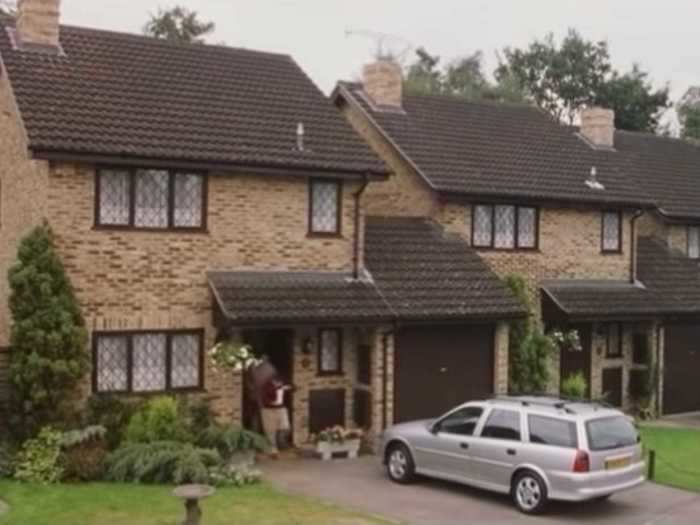
Harry's first visit from Hagrid in "Harry Potter and the Sorcerer's Stone," during which he learns that he's a wizard, occurs on his birthday, July 31.
In the film, the two make their way to Diagon Alley the next day to buy school supplies before Hagrid takes Harry to King's Cross station to catch the Hogwarts Express.
In the book, however, Harry has to go back to the Dursleys for the remainder of the summer. Vernon actually takes him to the station on September 1, which is when the train departs for Hogwarts.
Based solely on what we see in the film, Harry gets to Hogwarts a month early.
Going forward, in almost every movie the opening chapters of the corresponding book are condensed to get Harry to Hogwarts faster, making his long summers on Privet Drive seem brief.
Peeves the poltergeist is nowhere to be found in the films.
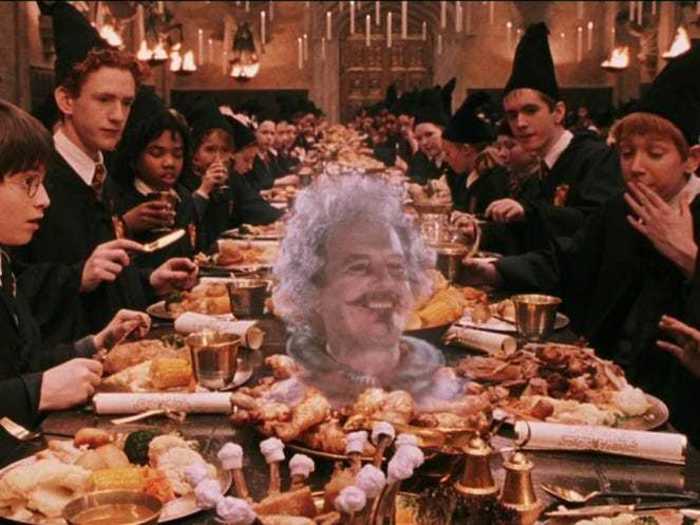
Arguably one of the most notable missing characters in the films is the mischievous poltergeist Peeves.
All of Peeve's scenes and big moments — like attending Nearly Headless Nick's Deathday Party, causing mayhem during Professor Umbridge's time at Hogwarts, and defending the castle during the Battle of Hogwarts — were cut out of the movies.
According to The Independent, the character was originally supposed to appear in the films and he was played by late actor Rik Mayall. But even though scenes with Peeves were reportedly filmed for "Sorcerer's Stone," the poltergeist was cut from the movie and the series as a whole.
Harry is supposed to have a dream that hints at Voldemort's connection to Professor Quirrell in "Sorcerer's Stone."
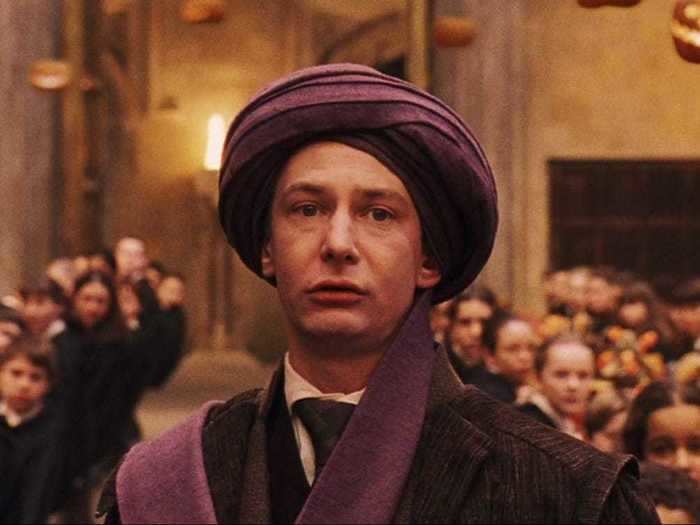
On Harry's first night at Hogwarts, he has a dream that ends up being quite prophetic.
In the dream, he's wearing Professor Quirrell's turban, which gets stuck on his head and tells him to transfer into Slytherin House. He also watches Draco Malfoy morph into Professor Snape.
This scene was cut from the "Sorcerer's Stone" movie, but without it, it's hard to say why Harry begins to mistrust Quirrell, or where his initial suspicions about Snape and Malfoy's bond come from.
Both of those things become pretty important in the first movie and beyond, so it was an interesting choice to leave the dream out.
Two of the challenges in "Sorcerer's Stone" were missing.
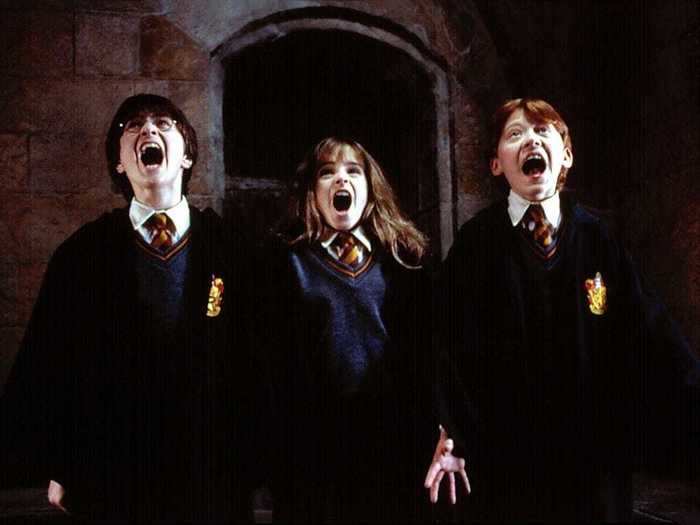
In the book, we're told that six professors and the headmaster were tasked with setting up enchantments within Hogwarts to protect the Sorcerer's Stone.
In the film, we only see evidence of five of those.
Harry, Ron, and Hermione encounter Hagrid's three-headed dog named Fluffy, get stuck in Professor Sprout's Devil's Snare, chase after Professor Flitwick's enchanted keys, and play Professor McGonagall's game of Wizard's Chess. Finally, Harry obtains the stone with the help of the Mirror of Erised, Dumbledore's enchantment.
What's missing, though, is a battle with Professor Quirrell's second troll (the trio defeats the first one earlier in the movie), and Professor Snape's potion riddle challenge.
The number of challenges was intentional because seven is considered a magical number both within and outside of the "Harry Potter" franchise, but some of them were still cut from the film.
The films ignore an important warning from Professor McGonagall.
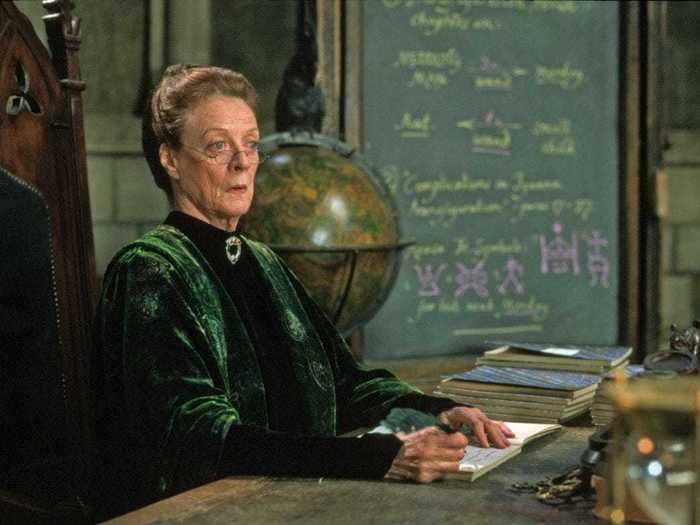
In the "Sorcerer's Stone" movie, when Harry is gifted with a Nimbus 2000 from Professor McGonagall, he opens it at the table in the Great Hall in front of all the other students.
But because first years at Hogwarts aren't technically allowed to have brooms, in the book McGonagall's gift comes with a very explicit note telling him not to open it at the table or else everyone else will want one.
The films never really explain what a Squib is.
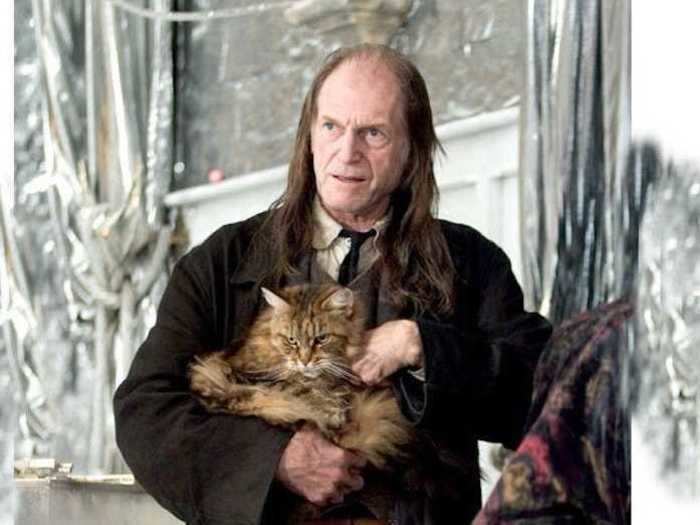
In "Harry Potter and the Chamber of Secrets," readers learn something about the crotchety caretaker Mr. Filch that makes his character more sympathetic.
The book includes a scene where Harry finds a Kwikspell book, a beginner's magic course for adults, in Filch's office. He has the book because he's a Squib, which is a non-magical person born to at least one magical parent.
This scene, and the explanation of a Squib as a whole, is completely left out of the movies leaving viewers to piece things together for themselves.
Additionally, after the Dementors attack Harry and Dudley in "Harry Potter and the Order of the Phoenix," Harry's neighbor Arabella Figg shows up and reveals that she is also a Squib and has been watching over Harry on Dumbledore's order.
Again, Squibs aren't explained in the movies, so it's very unclear to movie viewers why Harry's non-magical neighbor has a relationship with Dumbledore or knowledge of the Wizarding World.
The pets in "Harry Potter and the Prisoner of Azkaban" are supposed to give away some important clues.
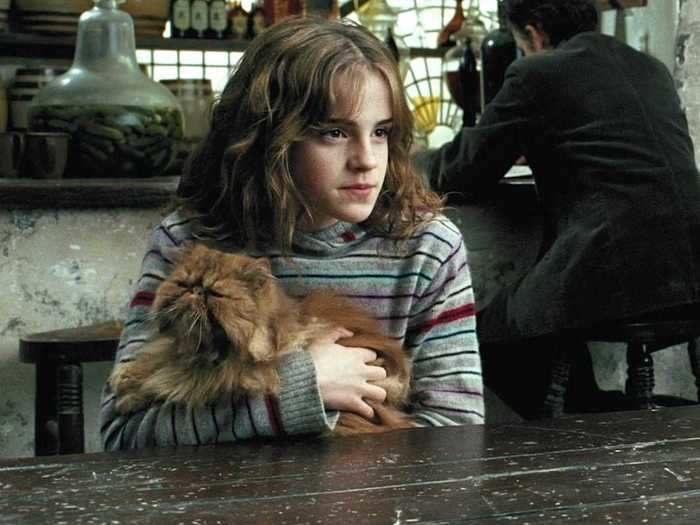
In the movie, we occasionally see Hermione's cat Crookshanks chasing Ron's rat Scabbers, just as any cat would do. But in the books, we see more bizarre behavior including a friendship with the stray dog Harry keeps seeing.
Eventually, we learn that Crookshanks is no ordinary cat. He knew all along that Scabbers was really Peter Pettigrew (Voldemort's right-hand man) in animal form and that Sirius Black (Harry's godfather) was disguised as a dog. Crookshanks had even been helping Sirius get into the castle to try to capture Pettigrew.
None of this is explained in the movies, but somehow it all still works out in the end.
The films never tell us who the Marauders are.
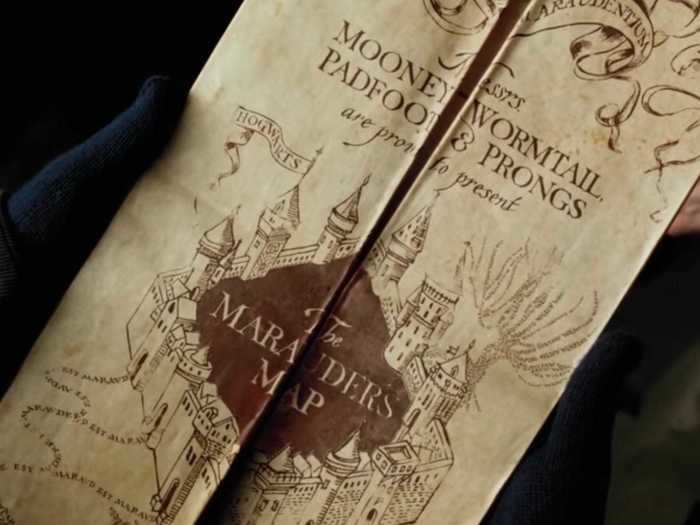
The big reveal of "Prisoner of Azkaban" centers around the Marauders, but the movie barely addresses them at all.
The Marauders were Remus Lupin, Peter Pettigrew, Sirius Black, and James Potter who go by Moony, Wormtail, Padfoot, and Prongs.
They were the ones who developed the Marauder's Map that Fred and George give Harry to sneak around the castle. However, in the movie Harry seemingly never figures out that his own father helped create it.
Also, all of the Marauders (except for Lupin, who was a werewolf) were unregistered Animagi, or wizards who can transform into animals. This knowledge helps readers understand how Sirius escaped from Azkaban and how Pettigrew had been living as the Weasley family's pet rat, but movie viewers are left in the dark.
Harry never gets his signed Hogsmeade permission slip in the movies.
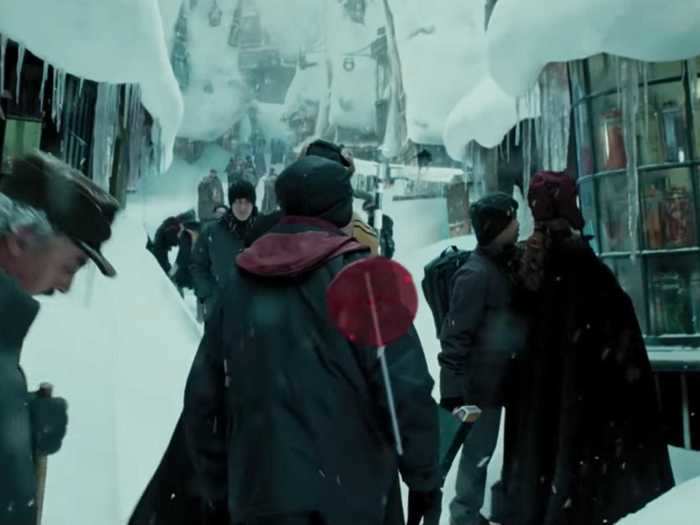
After trying and failing to get Vernon Dursley to sign his Hogsmeade permission slip at the beginning of "Prisoner of Azkaban," Harry is forced to stay at school while everyone else enjoys the nearby wizard village.
The book includes a scene near the end where Harry receives a signed Hogsmeade permission slip from Sirius, who he recently discovered is his godfather and legal guardian.
However, that scene is left out of the movie, which creates some confusion in later films when he's suddenly able to visit the village.
The house-elves were largely eliminated from the films.
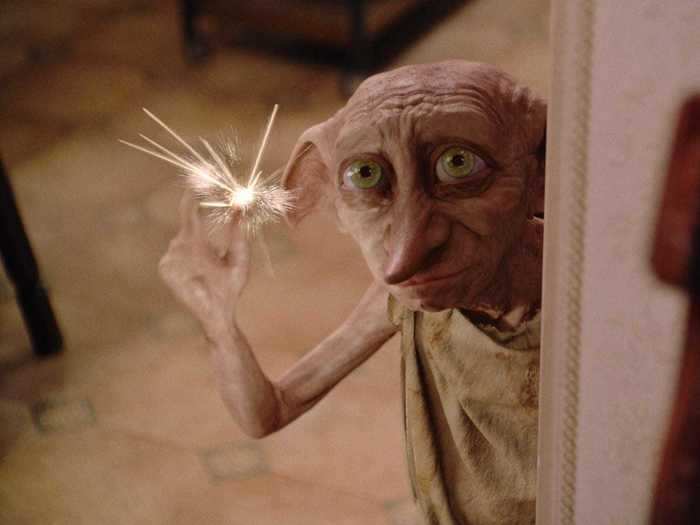
The house-elves play a huge part in the "Harry Potter and the Goblet of Fire" book — from Hermione starting the Society for the Promotion of Elfish Welfare (S.P.E.W.) to Harry's reunion with Dobby — but the elves are mostly removed from the film.
In fact, throughout the series, Dobby and Kreacher are the only house-elves with prominent roles in the films, but in the books, Winky is also important to the storyline in "Goblet of Fire" and "Order of the Phoenix."
Plus there are at least a hundred elves who live and work at Hogwarts.
Barty Crouch Jr.'s big reveal in "Goblet of Fire" probably left moviegoers with a lot of questions.
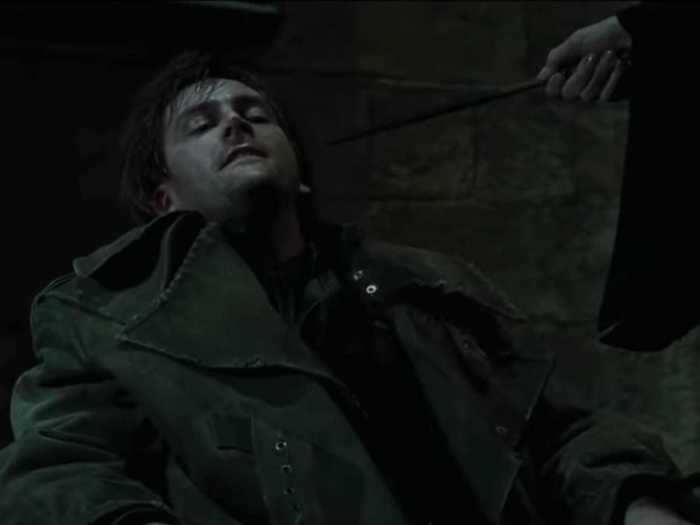
In "Goblet of Fire," we find out that the "Mad-Eye Moody" teaching Defense Against the Dark Arts was actually escaped prisoner Barty Crouch Jr. using Polyjuice Potion (which makes a wizard look like someone else).
Throughout this reveal, we find out that he's the one who put Harry's name in the Goblet of Fire, he helped him figure out the tasks, and he ultimately helped orchestrate his meeting with Voldemort in the graveyard at the end of the Triwizard Tournament.
What doesn't get explained in the film is how Barty Crouch Jr. escaped from Azkaban in the first place. However, in the book we learn that he and his mother used Polyjuice Potion to swap places, leaving Mrs. Crouch to die in Azkaban.
The movies never explained where Fred and George got the money to open their magical joke shop.
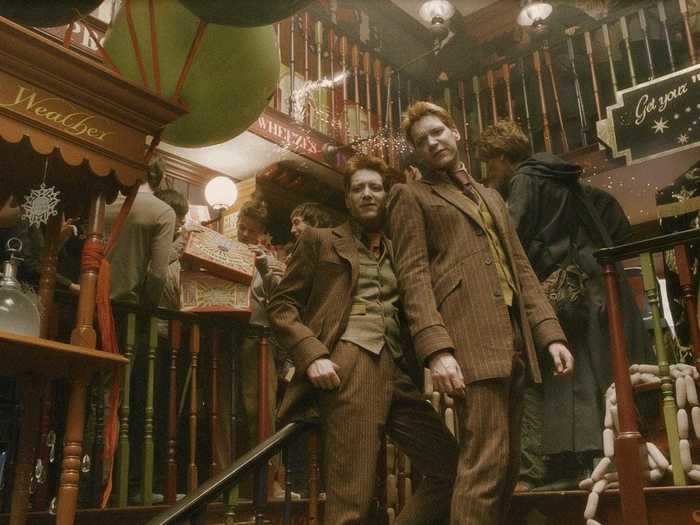
The Weasleys are not a wealthy family, and we're reminded of this numerous times throughout the series.
That makes it difficult to imagine how Fred and George easily accomplish their dream of dropping out of school and opening a joke shop.
When the twins start selling their products in "Order of the Phoenix" and open up the Weasley's Wizard Wheezes shop in "Harry Potter and the Half-Blood Prince" no one questions how they paid for it all.
But readers of the books will know that Harry gave them the 1,000 galleons he earned from winning the Triwizard Tournament.
There's a rift between Percy Weasley and the rest of his family that goes unnoticed in the films.
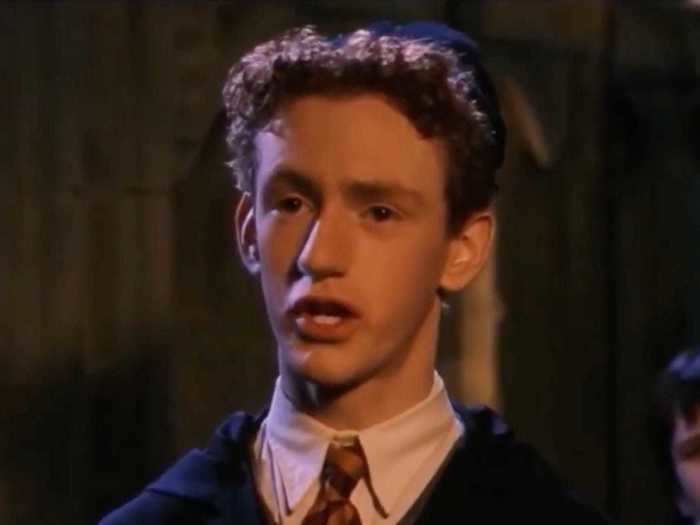
We know that Percy is a strict rule follower given his behavior as a Hogwarts prefect and Head Boy. But after leaving Hogwarts, he goes to work for Minister for Magic Cornelius Fudge, which drives a wedge between the Weasleys and their son.
Fudge refuses to believe that Voldemort returned at the end of "Goblet of Fire," and he maintains his stance throughout much of "Order of the Phoenix" despite mounting evidence to the contrary. The Ministry of Magic even works with the Daily Prophet newspaper to publish stories discrediting Harry and Dumbledore's accounts of what happened.
Percy is loyal to Fudge to a fault, and he even suggests at one point that his family should break ties with Harry, who is like a son to the Weasleys.
All of this causes him to become estranged from his family, which isn't explained in the films, so his apparent disappearance seems more mysterious.
The rift also makes for an emotional reunion — that goes unseen in the films — when Percy comes to his senses and returns to fight alongside his family at the final Battle of Hogwarts.
There's a connection between the Wizarding World and the Muggle World, according to the books.
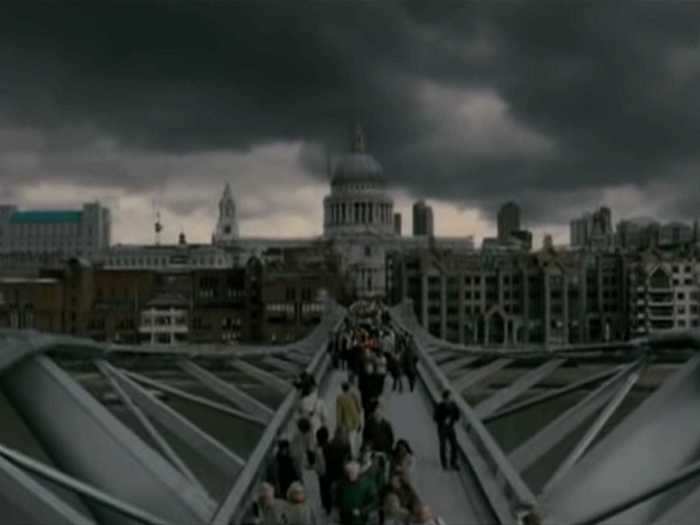
The first book hints that there's some spillover from the Wizarding World to the Muggle (non-magical) World since Vernon Dursley sees people dressed in elaborate robes and overhears people on the street referencing the "Potters" and "Muggles."
Even Sirius makes the Muggle news in "Prisoner of Azkaban" when he breaks out of the high-security wizard prison.
The "Half-Blood Prince" movie also leaves out an important scene where the Minister for Magic actually visits the British Prime Ministry to warn him about Voldemort's rising power.
This connection isn't really mentioned in the movies, except for a handful of scenes that show Death Eaters destroying London.
The Pensieve scenes were cut down quite a bit.
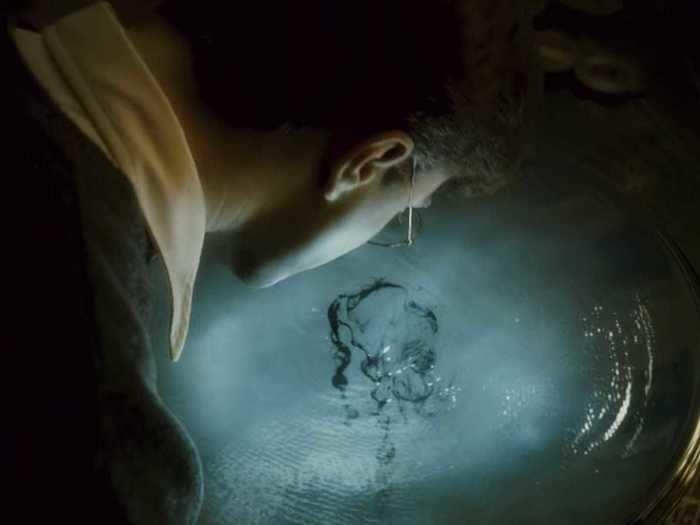
In the "Half-Blood Prince" book, Harry and Dumbledore spend a lot of time observing memories through the Pensieve. The film cuts out most of these scenes, including the one that reveals that the Defense Against the Dark Arts position at Hogwarts was cursed.
It turns out Tom Riddle wanted the position, and when Dumbledore aptly turned him down, he cursed the position. This explains why Hogwarts cycles through so many Defense Against the Dark Arts professors.
Another trip to the Pensieve in the books focuses on Voldemort's family history. We learn that Merope Gaunt, Tom's mother, used a love potion to make a Muggle to fall for her.
Because of this, their child grew up incapable of feeling actual love, which is an important detail left out of the movie that helps us understand how Tom was able to become the heartless villain Voldemort.
The explanation of Voldemort's army of Inferi was also left out of the films.
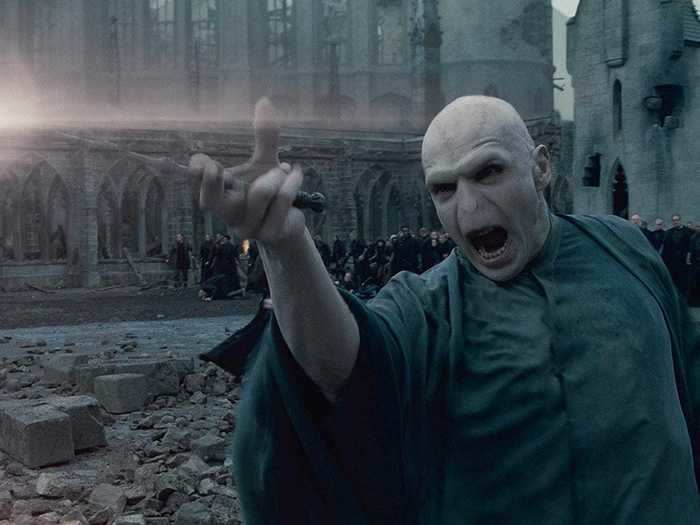
After learning that Voldemort has split his soul into seven Horcruxes, Harry and Dumbledore leave Hogwarts for a cave where Dumbledore thinks one of them may be hidden.
In the cave, we see zombie-like creatures in the water that try to pull Harry under. While watching "Half-Blood Prince," it's obvious that they're probably there to protect the Horcrux, but that's all we know.
The book, however, describes them in more detail, which makes them way scarier than the movie shows. They're called Inferi, and they're reanimated dead bodies produced by dark magic that Voldemort uses to create an army.
The concept is terrifying and probably a little difficult to explain in a family film.
We never see how Bill Weasley really got his scars.
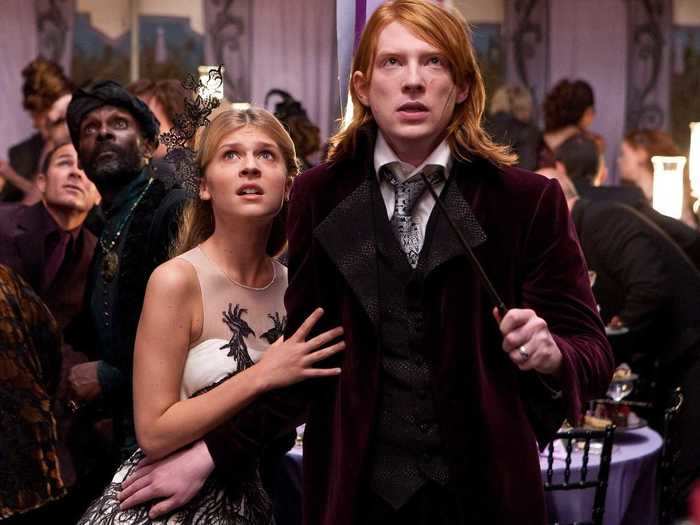
At the end of the "Half-Blood Prince" book, there's a battle at Hogwarts after Dumbledore's death.
Members of the Order of the Phoenix, including Bill Weasley, show up to fight the Death Eaters, and during the fight, Bill gets attacked by the werewolf Fenrir Greyback.
Bill gets away with just a scar and some side effects since Greyback hadn't fully transitioned before attacking him.
This battle doesn't exist in the movie — and Bill was removed from the "Goblet of Fire," "Order of the Phoenix," and "Half-Blood Prince" films — so in "Harry Potter and the Deathly Hallows - Part 1" the character is both introduced to Harry for the first time and has to explain that he fought a werewolf named Greyback.
The films ignore Sirius Black's will.
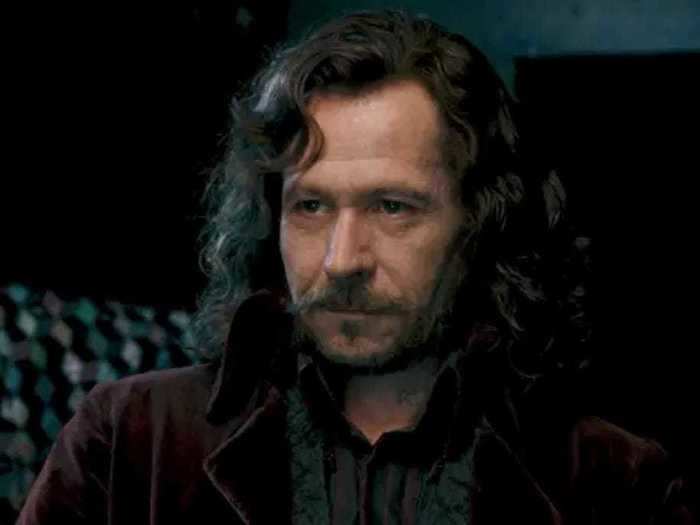
Kreacher is the Black family's house-elf, who Sirius leaves to Harry in his will, along with his family home at 12 Grimmauld Place.
This explains why Kreacher, who's typically antagonistic toward Harry and his friends, suddenly has to follow his orders in "Deathly Hallows." However, in the films, they don't mention the will, so it just seems like the house-elf had a change of heart.
We have no idea where Harry got the magical two-way mirror that saves the trio in the final movie.
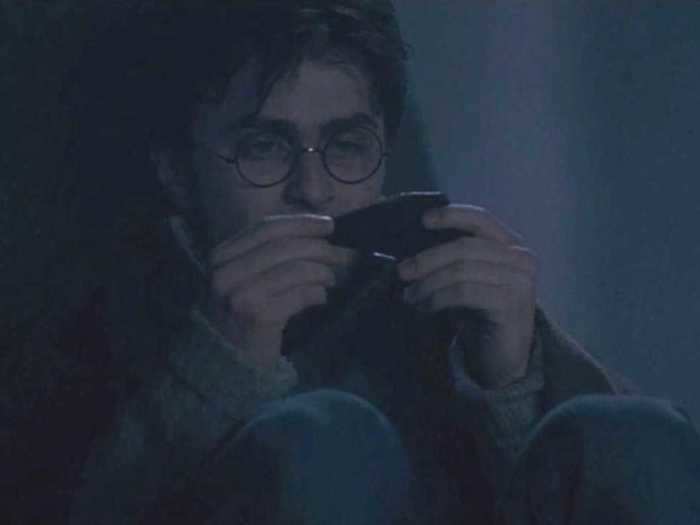
In "Order of the Phoenix," Sirius gives Harry a two-way mirror, but Harry forgets about the gift throughout the fifth book, so they never really use it to communicate.
However, this becomes really important in "Deathly Hallows" when Aberforth Dumbledore, who acquired the other part of the mirror, uses it to keep an eye on Harry and helps the trio escape Malfoy Manor.
The movies never explain that Sirius gave Harry the mirror, and viewers don't even see it until Harry packs a broken shard of it for their journey in "Deathly Hallows - Part 1." The significance of the magical object is not explained until later in "Harry Potter and the Deathly Hallows - Part 2."
Movie audiences likely would've benefited from knowing more of Dumbledore's backstory.
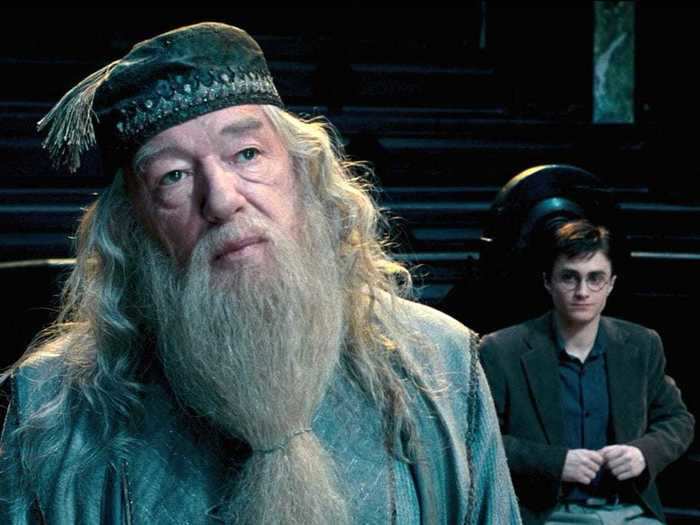
A large portion of the "Deathly Hallows" book focuses on Dumbledore's history told through stories as well as Rita Skeeter's scandalous tell-all.
The backstory includes more about his family, his relationship with the evil wizard Grindelwald, and his dabbling in the Dark Arts. Although these weren't his proudest moments, and they didn't match with Harry's perception of Dumbledore, they're all things that made him one of the most powerful wizards in the world.
Most of this backstory is removed from the movies, making the character of Dumbledore even more elusive.
It's not clear how the snatchers find the trio in "Deathly Hallows - Part 1."
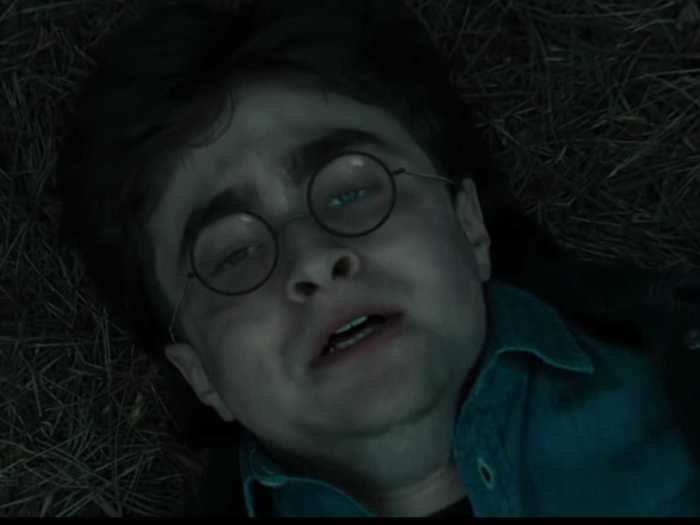
In "Deathly Hallows," Voldemort puts a jinx on his own name in order to trace any wizard who uses it — because he knows that the trio, Dumbledore's Army, and the Order of the Phoenix are the only wizards who would dare speak his name out loud.
In the book, the trio is caught twice because of this jinx: first while escaping Bill and Fleur's wedding and then again when they're hiding in the forest looking for Horcruxes.
In the film, they are also attacked in the same instances, but the movie avoids explaining the jinx on Voldemort's name. The Death Eaters and snatchers just happen to find their hiding places with no explanation.
There was no shrine to the Potters in Godric's Hollow in the movie.
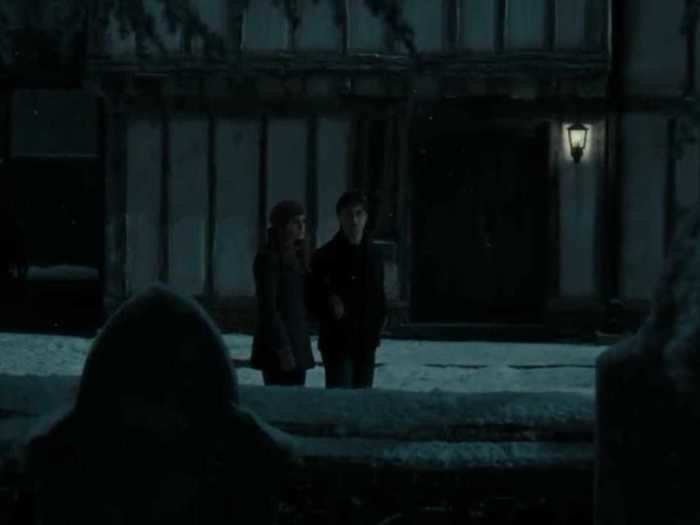
In "Deathly Hallows," Harry and Hermione make their way to Godric's Hollow to try to speak with Dumbledore's friend Bathilda Bagshot — and also for Harry to see where he was born and his parents died.
When they get there, they find a statue that only wizards can see honoring Lily, James, and Harry Potter, along with messages of encouragement from other witches and wizards supporting Harry's fight against Voldemort.
Not only is it an incredibly emotional scene, but also it's a moment for them to realize the scale of what they're doing and that they're not alone in their fight. All of this sentimentality made it an odd choice to remove the statue from the movie.
Read more:
READ MORE ARTICLES ON
Popular Right Now
Advertisement